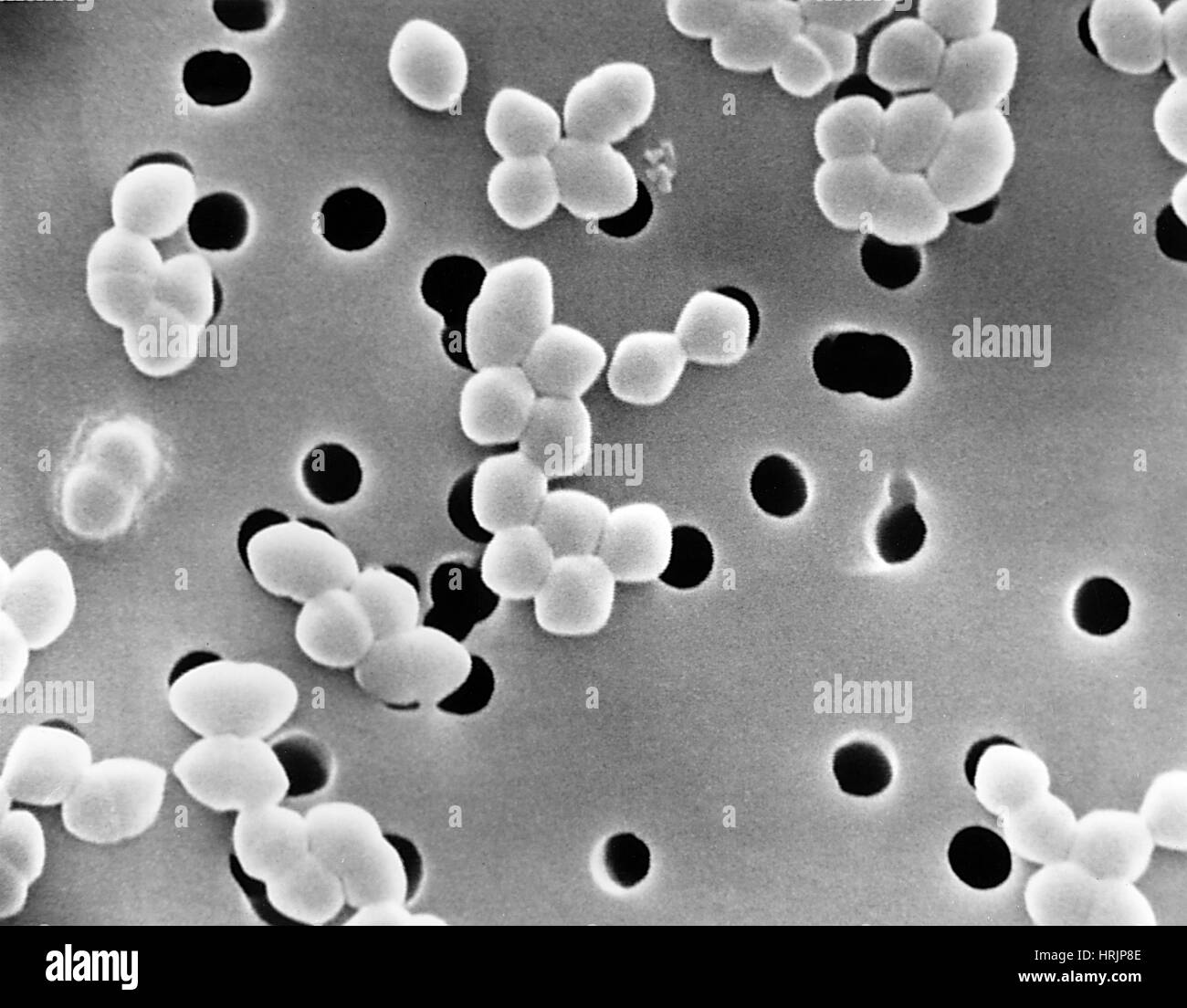Enterococcus Bacteria, SEM

Image details
Contributor:
Science History Images / Alamy Stock PhotoImage ID:
HRJP8EFile size:
39.4 MB (1.1 MB Compressed download)Releases:
Model - no | Property - noDo I need a release?Dimensions:
4200 x 3277 px | 35.6 x 27.7 cm | 14 x 10.9 inches | 300dpiPhotographer:
Photo ResearchersMore information:
This image could have imperfections as it’s either historical or reportage.
Scanning electron micrograph (SEM) depicted numbers of bacteria, which were identified as being Gram-positive Enterococcus sp. bacteria. Previously identified as "Group D" Streptococcus organisms, the most clinically relevant of these bacteria are, E. faecalis, and E. faecium. Enterococcus spp. bacteria are notoriously linked as etiologic agents responsible for nosocomial, or "hospital-borne" illnesses, such as "Vancomycin Resistant Enterococci", or VRE infections. These organisms are "commensal" in nature, which means that they normally colonize the human digestive tract, and become pathogenic when their host becomes immunosuppressed, such as after a surgical procedure, or during a prolonged illness, or in immunocompromised individuals who might be undergoing chemotherapy, or in the case of AIDS patients.